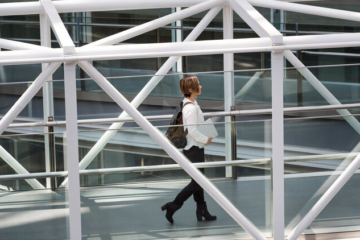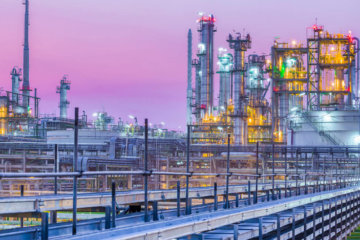Every modern building be it commercial or residential uses structural steel in one form or another these days. What makes it so popular is its very high durability, great load-bearing capacity, and most of all its very affordable price.
These features make structural steel an ideal material in large-scale construction applications like factories, multi-level parking lots, warehouses, bridges, etc.
This blog covers everything you need to know about structural steel fabrication. This information will help you realize what makes structural steel a great alternative to traditional building materials.
So, get ready to delve into the world of structural steel fabrication to ensure your next construction project proves to be a real success.
- What is Structural Steel Fabrication?
- The Process of Structural Steel Fabrication
- Design
- Material Selection
- Cutting
- Shot Blasting
- Bending
- Punching
- Welding
- Quality Checking
- Finishing
- Delivery and Installation
- Benefits of Structural Steel
- Applications of Structural Steel
- The Cost of Structural Steel Fabrication
What is Structural Steel Fabrication?
It is a process that involves the use of heavy industrial equipment to cut, bend shape, and assemble steel to create pieces according to the designs given by the customers.
In this process, raw steel is processed to create finished products suitable for many applications across various fields. The process of structural steel fabrication involves the use of specialized tools to create products that meet the project needs of the buyer while also adhering to the standards and codes set by the regularity authorities.
The Cost of Structural Steel Fabrication
The cost of structural steel depends on several factors like the scope of the project, the complexity of the steel’s design, and the type of steel. Other factors like the distance from the supplier’s plant and the time to complete the installation can also impact the overall price.
You can find structural steel in different price ranges based on the quality and durability of the material. It is available at a rate of $1200-$2000 per ton. Some suppliers can also charge $3000 per ton based on the steel quality and overall fabrication requirements.
The Process of Structural Steel Fabrication
Following are the main steps involved in different types of structural steel fabrication processes
1. Design:
This is the first step which involves the use of CAD to create product designs. Detailed specifications and calculations are used here to create steel products that meet the project’s needs.
This information also provides you with an estimate of the bill of material (BOM) and bill of operations (BOO) to help you proceed with production and purchase faster.
2. Material Selection:
In this step, you select the type of steel and then find a supplier to acquire that material. You can either order it in standard length or tell them about your specific requirements.
3. Cutting:
After that steel cutting is done either by hand or with CNC machining. Water jets or laser cutting tools are also used to cut steel to your desired length and shape.
In the case of pre-fabricated steel cutting where pieces already have a shape, only a little cutting is needed to remove excess material.
In the case of synthetic steel, cutting is done from plates and the material is processed to create the shapes you need for the project.
4. Shot Blasting:
In this step, the processed components are cleaned and then treated with shot blasting machines to remove rust, water stains, oil, and other impurities.
5. Bending:
After cleaning, the steel is bent using section, roll, or tube bending processes to create curved edges and straight shapes. This process ensures the steel doesn’t crack or break when used. The bending can be done by hand or with cornice brakers or rollers to increase speed.
6. Punching:
Also known as stamping and shearing, this process involves punching holes for the cleats or creating specific shapes to trim excess materials from the steel. It also involves using bolts to fasten steel components or to attach beams with columns.
7. Assembling by Welding:
In this step, steel pieces are welded with TIG, MIG, or MAG welding techniques to ensure durability. This step is sometimes done on-site to get the final product needed for the project.
8. Quality Checking:
This step involves inspecting the fabricated steel pieces for faults. This gives you peace of mind and ensures the steel meets all the specifications.
9. Finishing:
In this step, the steel pieces are coated with paint to increase their weather resistance, durability, and lifespan. The steel surfaces are usually coated with a layer of anti-corrosion paint and then one or two more layers of normal paint are added.
10. Delivery and Installation:
Finally, the fabricated steel is now ready to be delivered and installed. The assembly of the steel pieces on site is done by bolting, riveting, or welding.
For installation, heavy-duty cranes or some other tools can be used based on the size of the steel component and location.
Benefits of Structural Steel Fabrication
Structural steel has many benefits over regular steel and other building materials owing to the use of sophisticated tools and technologies behind structural steel manufacturing processes.
Here is what makes structural steel an ideal material
- It is incredibly strong and relatively inexpensive giving you more value for money.
- It requires very little care and maintenance which cuts costs and gives longevity.
- It can be customized to meet your design needs without sacrificing its core strength.
- Steel in itself is aesthetically pleasing. However, you can also coat it with any other color to meet your interior or exterior design and increase durability.
- Structural steel is usually prefabricated off-site which reduces both construction time and project costs.
- Structural steel is %100 recyclable which means you can use it again and again to create different parts for different applications. This makes it a more eco-friendly and sustainable building material option.
Applications of Structural Steel Fabrication
Following are the main applications that involve the use of structural fabricated steel
- It is used in the construction industry to create beams, girders, steel plates, and H-shaped steel sections.
- It is used in transmission towers, pipelines, and wind turbines in the energy sector.
- The mining industry also uses structural steel to make rails, beams, rods, gratings, and other fittings.
- The shipbuilding industry uses it to make ferries, recreational boats, and supertankers.
- It is also used in the aerospace and automotive industry to create sturdy and durable parts.
Conclusion
The creation of structural steel requires extreme precision and skill and this is the reason why you need to be extra careful when buying this material. You need to consider your budget, the reputation of the manufacturer, and the intended use when making your decision to be on the safe side.
The structural steel manufacturing process discussed in this article is being followed by every leading manufacturer to ensure the steel they make lasts for decades.
The structural steel fabrication done this way gives you reliable and durable construction solutions across various industries leading to stronger building foundations and increased safety.
Visit us at PSI Power Solutions to order our premium-quality structural steel for all applications.


